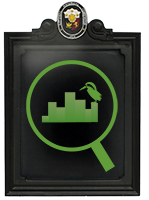 Tulay Malagonlong
Tulay MalagonlongTulay Malagonlong is a National Cultural Treasure, National Museum; National Historical Landmark, NHCP; Local Cultural Property - Historical Stone Bridges of Tayabas; Registered Property, City of Tayabas, Quezon located at Tayabas City, Quezon, Region IV-A.
Malagonlong Bridge was built in 1840 by Fr. Antonio Mateos. The stone bridge which spans more than 400 feet in length was finished, though, by 1850 during the term of Governor General Jose Maria de la O.
The stone bridge was constructed first under the direction of Fr. Mateos who paid from his personal savings the labor cost for this bridge.
Malagonlong Bridge is one of two stone bridges in the town of Tayabas, once of the capital of Tayabas Province. The other bridge is Mate Bridge, also known as Bantayan by the people. There are other bridges in Tayabas spanning rivulets and main waterways; however, these are minor ones compared to Bantayan and Malagonlong Bridges. During the Spanish period, Malagonlong Bridge was considered to be the best of its kind in Tayabas.
_____
Declared as a National Cultural Treasure under the title "Spanish Colonial Bridges of Tayabas" and a Local Cultural Treasure under the City Government of Tayabas thru Ordinansa Blg. 17-18; Malogonlong Bridge is said to be one of the oldest and longest stone arched bridges found in the town of Tayabas, Province of Quezon. The bridge was used for vehicular traffic until quite recently (2003), and can be considered an engineering feat that has withstood the test of time. More than its structural importance, it is also a graceful example of an arched stone bridge, set in a beautiful setting typical of the rivers.
_____
This magnificent and strong bridge has a total length of 445 feet and has 5 arches
The first arch has a height and width of 36 feet; the second and third with 33 feet; the fourth with 30 feet; and the fifth with 18 feet
Has a marker that says “Siendo Gobernadorcillo De esta Cabecera en el ano de 1850 D. Julian S. Francisco”
_____
Marker Text:
Tulay Malagonlong
Ginawa noong 1840 sa ilalim ng pangagasiwa ng kura paroko ng Tayabas, si P. Antonio Mateos, at natapos noong 1850. Isa sa mga nalalabing tulay na bato sa bansa na ipinagawa sa panahon ng pananakop ng mga Espanyol.
Date Unveiled: November 26, 2004